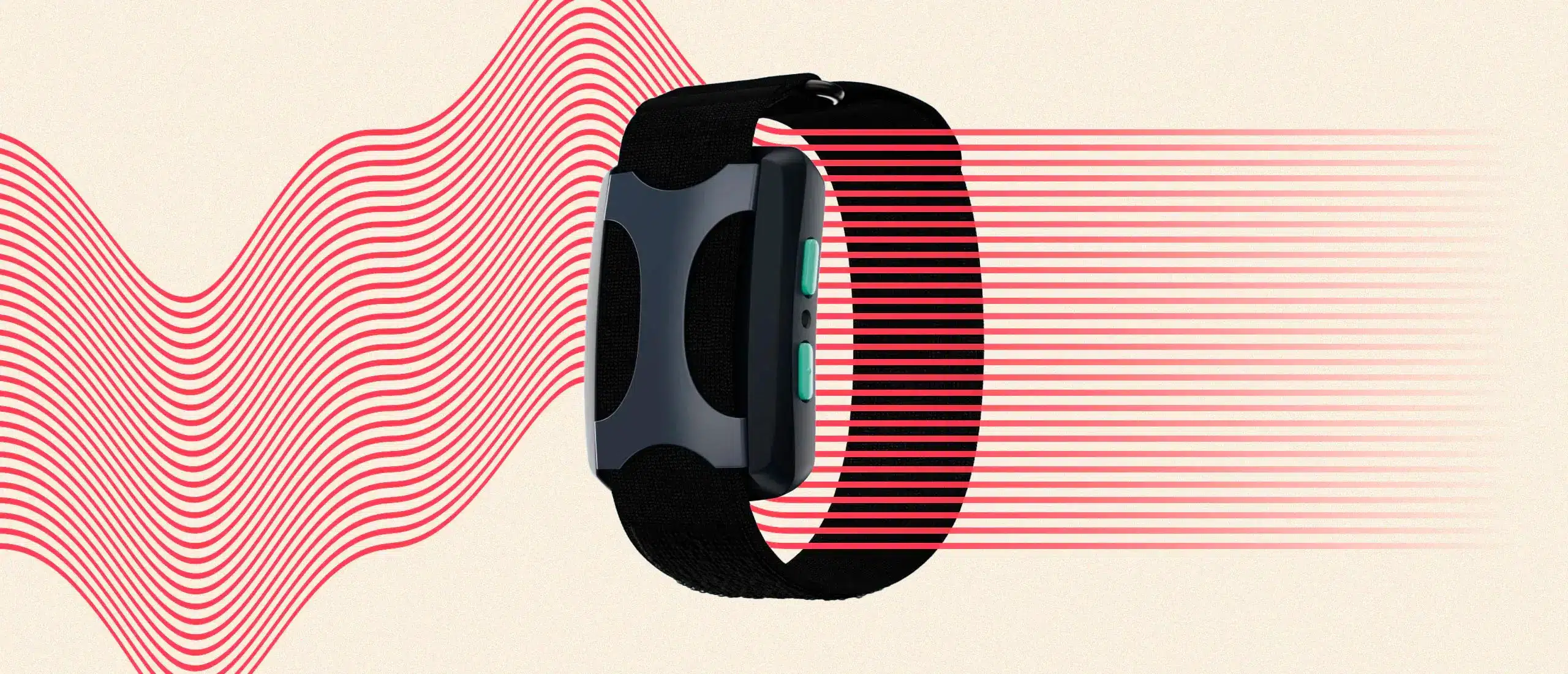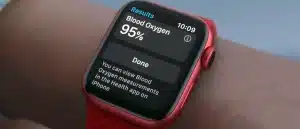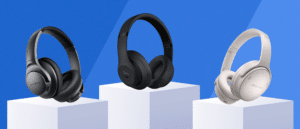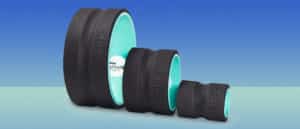The Wearable for People Who *Should* Meditate But Don’t Have Time
I assumed everyone’s anxiety felt the same as mine—ruminating thoughts, shortness of breath, and the inability to focus on anything but those—until my therapist asked me what my personal brand of anxiousness feels like. While most people will suffer from some form of anxiety in their lives, those of us that deal with it daily might need more than a mental health walk or a CBD gummy to stave off physical and mental symptoms, whatever they may be. Reframing unproductive thoughts with guidance from a therapist helps big time, but what happens when you want immediate relief, are on deadline, or are just trying, for dear life, to get to sleep?
Enter: The Apollo Neuro wearable—a new kind of smart device that relieves stress and anxiety via touch therapy.
I tested one for six months to see if it lived up to the hype. So, if you’re wondering “what is touch therapy and how can it help get my life in order?” keep reading for the full review.
What Is the Apollo Neuro Wearable?
If you’re familiar with Whoop, Fitbit, Apple Watch or anything of the sort, Apollo’s wearable is similar, except rather than tracking your sleep and activity, it enhances, promotes, and improves it. The device can be worn strapped around your wrist or ankle, or clipped to a piece of clothing to offer gentle touch therapy to help rewire your brain, setting you up for better sleep, relaxation, and focus.
Developed by neuroscientists and physicians, the device has some real clout. It’s scientifically proven to improve your body’s resilience to stress, making it easier to relax, sleep, focus, and recover quicker.

What’s Good About the Apollo Neuro Wearable?
Improves stress, anxiety, sleep, focus, energy, and more
While some wearables excel at one thing (sleep tracking, for instance), the Apollo is scientifically proven to improve a variety of metrics across sleep quality, focus, heart rate variability, performance, and recovery. It’s been studied in six different clinical trials, with nine more underway. On average, test subjects experienced the below improvements:
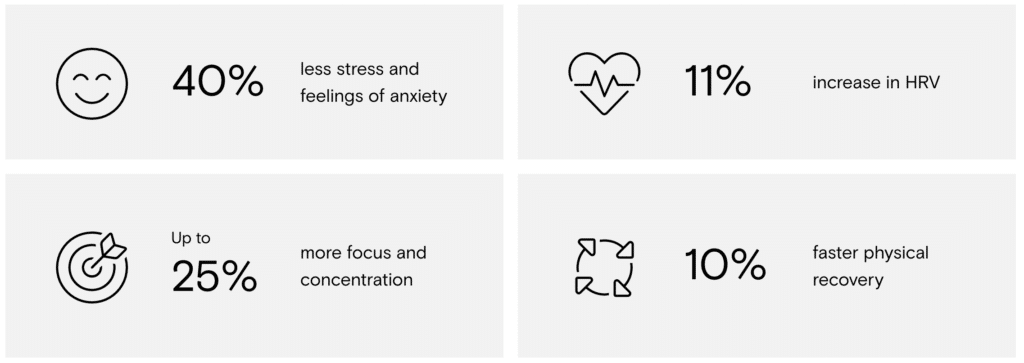
I wasn’t part of the test group, so I can’t say exactly how much my anxiety improved, but I can feel it. Over the last six months, I switched off between wearing the Apollo Neuro all day (with scheduled sessions), to sleep, and during specific moments of anxiousness or lack of focus, and noticed an improvement in everything from sleep quality to focus to mindfulness. I regularly get those aforementioned symptoms of racing thoughts and shortness of breath due to anxiety, and the Apollo Neuro worked to immediately calm my nervous system—it was like taking Advil for a headache: near-instant relief. A huge feat when it normally takes consistent meditation and therapy sessions over the course of weeks to sort itself out.
I also noticed an immediate effect on my ability to focus when I needed a boost, like during a particularly long day of meetings or while sitting down to write a long review, like this one. The gentle buzzing sensation is quicker-paced on the focus setting compared to sleep or anxiety relief, so it helps to keep me alert rather than lull me into a relaxed state.
As for sleep, I should start by saying I don’t have a particularly hard time falling asleep (I know, I know), but I do notice that I fall into a deeper, more restful sleep quicker, and wake up feeling more rested on the nights I wear Apollo Neuro to bed versus those that I don’t. And there’s scientific proof to back it up.
The Apollo wearable has been studied extensively for its ability to improve sleep quality. To test its effectiveness, the research team launched a real-world sleep study with more than 500 participants. It then analyzed the data finding the following trends from those who used the Apollo Neuro wearable consistently (at least 3 hours a day, 5 days a week, during the day and night)
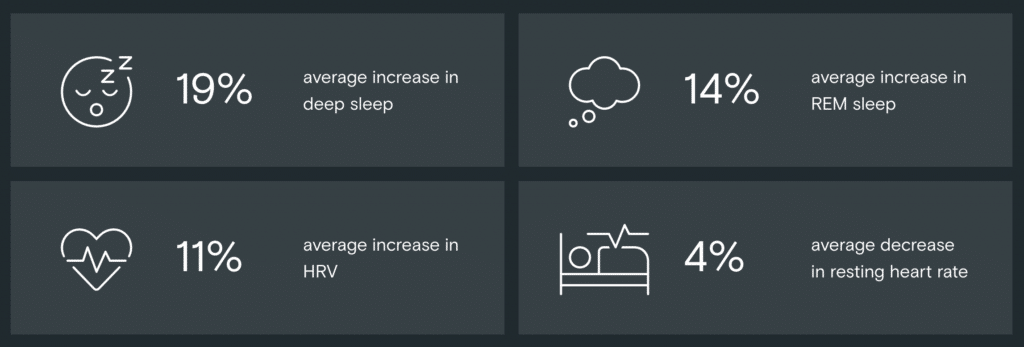
Long battery life
There’s nothing worse than getting into bed to track your sleep, or starting a workout, only to find your wearable to be nearing the end of its battery life. I have to charge my Apple Watch daily, which means it sits on the charger while I sleep, so I don’t get any sleep metrics. Apollo Neuro isn’t meant to be worn 24/7, so charging it is simple, and it holds said charge for up to eight hours of continuous use. Most often you only need to use it for 15 to 60 minutes at a time—whether it be to drift off to sleep or dissolve anxiety—so it can last more than a week on a single charge.
Comfortable wearing options
It comes with two straps: a shorter one for your wrist, and a longer one for your ankle. (I choose to wear my Apollo around my ankle.) Both of the straps are made of a comfortable neoprene material that’s breathable and soft. The clip option wasn’t available when I bought my Apollo, but I imagine that’s equally comfortable and the most undetectable, too, as it’s meant to be attached to your clothing on a shirt collar, bra strap, or waistband. This option might be best for you if you already wear other smart tech devices on your wrist (like an Apple Watch or Whoop).
App-controlled
The device connects to the Apollo Neuro app, which controls everything from intensity to duration to schedules that automatically trigger different vibrations at specific times of the day. This is super helpful if you, like I, get anxious at exactly 3 p.m. daily, due to a looming to-do list that is nowhere near being completed. Just set your schedule in the app and it’ll turn on automatically.
I like to set my intensity at different percentages depending on the goal. For sleep, I wear the Apollo over an ankle sock, so I set it higher at around 62 percent intensity. If I’m using it for anxiety during the day, I might drop that to 30 percent and wear it on my wrist. The brand notes that you can feel the Apollo Neuro vibrations more intensely on larger bones, like the chest or spine, so if you’re clipping it to clothing, you may want to start with a lower intensity than if you’re wearing it on your wrist or ankle.

Want exclusive content? Our digests do that.
The best science-backed, expert-driven health and lifestyle content delivered to your inbox, weekly.
What’s Not Good About the Apollo Neuro Wearable?
Bulky design
To say the Apollo Neuro isn’t the most streamlined wearable out there would be generous. It’s quite large and cumbersome when compared to others like the Whoop, Apple Watch, or Fitbit. This is why I choose to wear it on my ankle most of the time—it gets in the way too much when worn on my wrist. I’d probably use it more often if I could keep it strapped to my wrist all day, so this is a design flaw I feel could be improved upon.
Expensive
Apollo Neuro is proven to work, and a lot of science and research went into its development, so the cost is justified to a certain extent. But when you consider it at face value, it’s really just a piece of plastic that vibrates at different frequencies. $400 seems pretty steep.
No display screen
While I do appreciate that it does what it’s supposed to, and doesn’t add yet another screen to my life, it would be convenient to start, stop, or switch between modes directly on the device, without forcing me to be on my phone any more than I already am. The only control on the device itself is for intensity via two buttons that increase or decrease it.
The Experience
Apollo Neuro is simple enough to use daily, so I found myself reaching for it in times of stress. I liked the ability to control my stress responses on a predetermined schedule and liked the various wearing options. I also really enjoy that I can turn it on and go about my business, knowing it’s working in the background to send signals to my body and mind. I don’t often have 10 minutes to stop and take the time to meditate in the middle of a busy workday, but I do have the five seconds it takes to strap it to my ankle and press go in the app.
I use it nightly for sleep assistance and notice a difference in how quickly I fall asleep on the nights that I wear it compared to when I don’t. I’ve now added it to my list of carry-on items when traveling—it helps me sleep in unfamiliar environments and I’ve used it to melt in-flight anxiety, too.
Do I think it’s worth nearly $400? Eh, probably not. But if you’re someone who has tons of trouble sleeping, calming down, or running super anxious, it’s worth a shot (and makes a great gift). It’s gone through clinical trials and there’s real science behind it, so if nothing else has worked, this might be your solution.
The Competition
Touchpoint
Based off the same principles of touch therapy, the Touchpoint ($189) functions similarly by gently vibrating to calm you down, increasing focus, help with sleep, and improve performance. But there are only three vibration speed settings (slow, medium, and fast), which don’t alter based on the issue you’re trying to solve for.
Sensate
Sensate ($299) is another touch therapy device that uses gentle vibrations to stimulate the parasympathetic nervous system to deliver a state of calm when you need it most. It claims to improve heart rate variability, sleep, and stress levels, calm nerves, and boost resilience all by using it for a daily 10-minute session. Rather than wearing it on your wrist, ankle, or clothing, it’s meant to be placed on your chest bone while laying down, which makes it a bit less convenient than the Apollo Neuro or Touchpoint devices that can be used on the go.
The Bottom Line
The Apollo Neuro is a wearable that uses touch therapy to send silent, soothing vibrations to your body. Your body then interprets these touches as feelings of safety and control, counteracting your fight or flight response and helping to rebalance your nervous system. The price is a bit steep, but it’s backed by science, so if you’ve tried everything else, it’s worth a shot.


